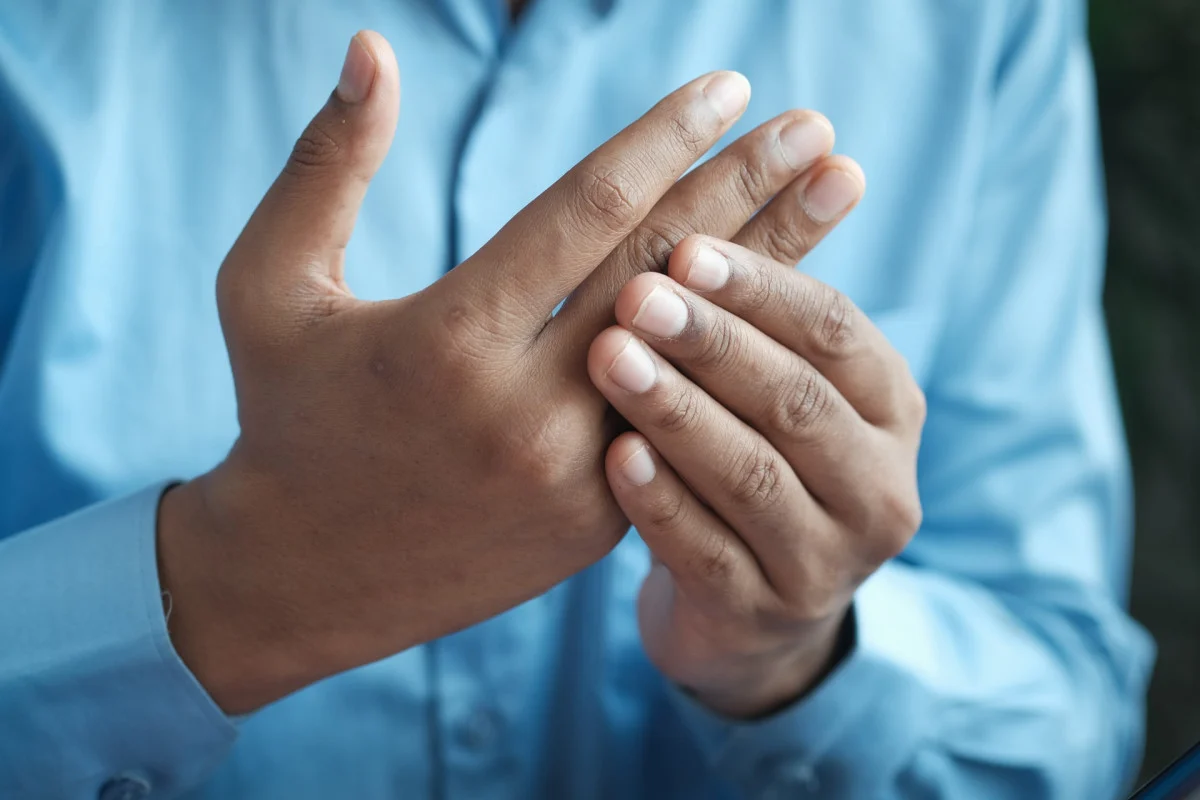If you’ve ever experienced carpal tunnel syndrome, you might be familiar with the weakness, discomfort, and tingling that comes along with it. These bothersome symptoms are common, and they often lead people to wonder which therapies or treatments can provide relief. If this sounds like you, you might be wondering: Can massage help carpal tunnel syndrome?
Below, find everything you need to know about massage for carpal tunnel syndrome, including the benefits, research, and how to try it at home.
What Is Carpal Tunnel Syndrome?
Carpal tunnel syndrome is defined by tingling, numbness, and weakness in the wrist, hand, and forearm. These symptoms often occur when your median nerve gets pinched or put under pressure.
But what exactly is the median nerve, and what does it do?
Well, the median nerve starts in your armpit and runs down to your lower arm. It controls many of the functions in your forearm, wrist, and hand, and it fits through a small groove in your wrist known as the carpal tunnel.
Many factors can cause swelling in the wrist and lead to carpal tunnel syndrome. For example, it can stem from repetitive motions like typing, knitting, and other hands-on activities. It can also be tied to:
- Underlying conditions or diseases
- A family history of carpal tunnel syndrome
- Wrist injuries, such as a sprain or strain
- Hormonal imbalances related to thyroid, pregnancy, or aging
Can Massage Help Carpal Tunnel Syndrome?
Because the carpal tunnel is such a narrow passageway, even minor amounts of swelling and inflammation can put pressure on your median nerve. Fortunately, massage therapy may be able to help.
Massage can relieve some of the tension from the tissue surrounding the median nerve. Beyond that, it can help drain excess fluids and boost blood flow to the area.
Research on Massage and Carpal Tunnel Syndrome
One 2013 study found that massage with trigger point therapy was helpful for patients with carpal tunnel syndrome.
Another 2012 study set out to find which kinds of simple self-massage would help most with the condition. They found that a three-minute massage using a combination of these methods could soothe symptoms:
- Effleurage massage, which uses long, gentle strokes with light pressure
- Friction massage, which applies deeper pressure to targeted areas
- Petrissage massage, which uses kneading to stretch and squeeze muscle tissue
- Gentle shaking, or light vibration of the arms
How Can You Massage Carpal Tunnel Syndrome?
There are some easy and effective ways to try carpal tunnel massage at home, but be sure to check with your physician first. Sometimes, carpal tunnel syndrome appears with underlying conditions that can worsen with massage.
Once you’ve got the go-ahead, give either of these techniques a try:
Self-Effleurage Massage
An effleurage massage is the easiest technique to try at home. You can use light, circular stroking movements to massage the muscles in your upper arm, forearm, and hand. This gentle technique can help you break up any excess muscle tension that might be putting pressure on your median nerve.
If you try this method, be sure to be extra gentle near your wrist area. And if you feel any pain or discomfort, it’s best to stop the massage and save it for another day.
Using a Therapeutic Massager
As an alternative to your hands, you can also use a high-quality massaging device. The MedMassager Body Massager Plus is one physician-trusted option that uses oscillating motions to soothe tension and provide relief throughout the body.
To use the MedMassager for carpal tunnel syndrome:
- Turn the device to the lowest setting and rest your forearm on top of it for one to two minutes.
- Then, turn the massager up to whichever speed feels comfortable to you.
- Massage your arm like this for up to ten minutes. You can use this technique up to several times per day if you wish.
Stretches to Include Alongside Massage
Along with massage, certain stretches can boost circulation and relieve tension in your arms and wrists. With the approval of your doctor or physical therapist, you might benefit from adding these stretches to your routine:
Prayer Stretch
The prayer stretch is a relatively simple stretch that can help you loosen up muscles and tendons in the forearm.
- First, place your hands in a “praying” position in front of your chest, with your fingers pointed up at your chin.
- Holding this position, slowly lower your arms until you feel a deep stretch in the underside of your forearms.
- Hold for 10-20 seconds and release.
Wrist Flexor
The wrist flexor stretch can also ease muscle tension in your lower forearms.
- Straighten your arm in front of you with your palm facing up.
- Then, use your other hand to pull your extended hand downward for a gentle stretch.
- Hold for as many seconds as feels comfortable to you.
Trying Massage for Carpal Tunnel Syndrome
Before trying massage for carpal tunnel syndrome, remember to get your doctor or physical therapist’s approval. Along with giving you the green light, a physical therapist could also offer you expert tips to improve your self-massage experience.
Then, you can get started by trying a gentle self-massage or using a device like those from MedMassager.
Check out the MedMassager Body Massager Plus today, or learn more about how it can help carpal tunnel syndrome here.


